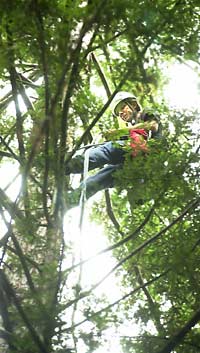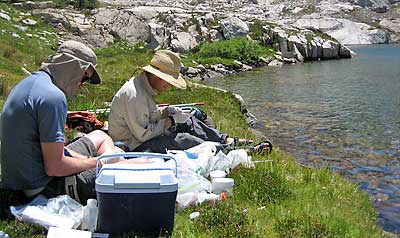
There's an interesting article in New Scientist magazine this week on Evolution's greatest mistakes. The article covers seven areas of human biology where evolution has made the best of a bad job, and where it would be hard to argue that any 'intelligent' design has been going on. Unfortunately reading the article requires a subscription to the magazine so from a Berkeley website you may, or may not, be able to read it
here. But if not, in the interest of academic debate and in the spirit of fair use, I copy an extract below.
A particularly interesting topic for this class is the discussion of mitochondrial DNA. Bottom line: If you wanted to build humans to last, mitochondria are the last place you'd put DNA.
'Inside every one of our cells are dozens of little sacs called mitochondria, in which sugars are "burned" to produce the energy that powers the cells. The process also produces highly damaging molecules called free radicals, so the interior of a mitochondrion is hardly the safest place for vital DNA - and yet it is home to the genes for 13 crucial mitochondrial proteins. It's a crazy design: like keeping the repair manual for a steam engine by the furnace, where it inevitably becomes charred and unreadable. The slow loss of function as mutations accumulate in mitochondrial DNA may be the main cause of ageing and, some believe, of many age-related diseases, from diabetes to Alzheimer's.
The DNA is there because of our evolutionary history. Mitochondria are the remnants of a once independent bacterium that formed a symbiotic alliance with our cells around 2 billion years ago. Over time, many of the bacterium's original genes have been lost or jumped to the cell nucleus, but human mitochondria still retain 13 genes.
Anti-ageing research is already exploring ways of moving the remaining genes to the safety of the nucleus. It will not be easy. The 13 genes cannot simply be moved to the nuclear genome, because then the 13 proteins will be made outside the mitochondria where they are needed. A solution might be to get the mRNA recipes for proteins delivered to the mitochondria, so the genes reside in the nucleus but the proteins are still made inside the mitochondria.'
This time last year: the very depressing Eastern Garbage Patch
Labels: Evolution











